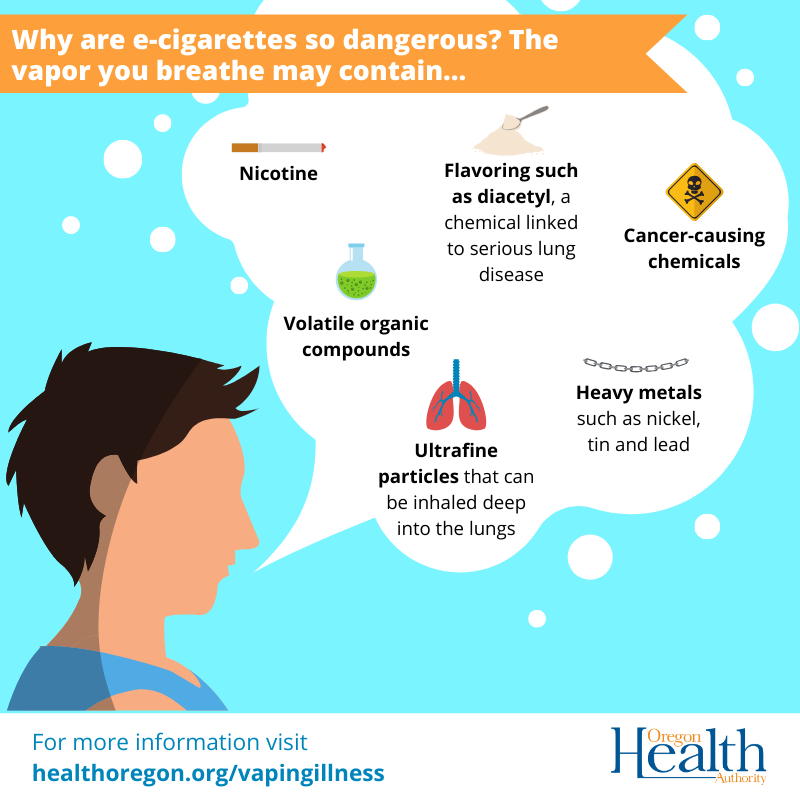Electronic cigarette (e-cigarette) vapor is not harmless and contains potentially harmful substances. While often perceived as a safer alternative to combustible cigarettes, evidence indicates various health risks associated with its inhalation.
Key Harmful Components in E-cigarette Vapor
E-cigarette aerosol can expose users and bystanders to several harmful chemicals, including:

- Nicotine: A highly addictive substance that can adversely affect adolescent brain development, impact fetal development, and contribute to cardiovascular issues.
- Ultrafine particles: These can be inhaled deep into the lungs and may cause inflammation and other respiratory problems.
- Flavoring chemicals: Certain flavorings, such as diacetyl, have been linked to serious lung diseases like bronchiolitis obliterans. Many flavorings have not been tested for inhalation safety.
- Volatile Organic Compounds (VOCs): Some VOCs found in e-cigarette vapor are known irritants and can cause nausea, headaches, and damage to the liver, kidney, and nervous system with prolonged exposure.
- Heavy metals: Metals like nickel, tin, lead, and chromium can leach from the heating coil and other device components into the aerosol.
- Carcinogens: Various chemicals known or suspected to cause cancer, such as formaldehyde and acetaldehyde, can be present, especially when the e-liquid is overheated.
Potential Health Risks
Exposure to e-cigarette vapor is associated with a range of health concerns:
- Respiratory issues: Including coughing, wheezing, asthma exacerbation, and increased risk of lung infections. Severe lung injury (EVALI) has also been linked to certain e-cigarette products, particularly those containing THC and vitamin E acetate.
- Cardiovascular effects: Nicotine increases heart rate and blood pressure. Chronic use may contribute to an increased risk of heart attack and stroke.
- Nicotine addiction: E-cigarettes can lead to or sustain nicotine addiction, especially in young users.
- Developmental risks: Nicotine exposure during adolescence can disrupt brain development, affecting attention, learning, and mood. It is also harmful during pregnancy.
- Oral health problems: Including gum inflammation and increased risk of periodontal diseases.
- Secondhand exposure: Non-users can be exposed to harmful substances via secondhand aerosol.
While e-cigarettes may expose users to fewer toxicants than traditional cigarettes, their vapor is not simply water vapor. The long-term health consequences of e-cigarette use are still under active investigation, but current scientific evidence indicates that e-cigarette vapor poses significant health risks.










